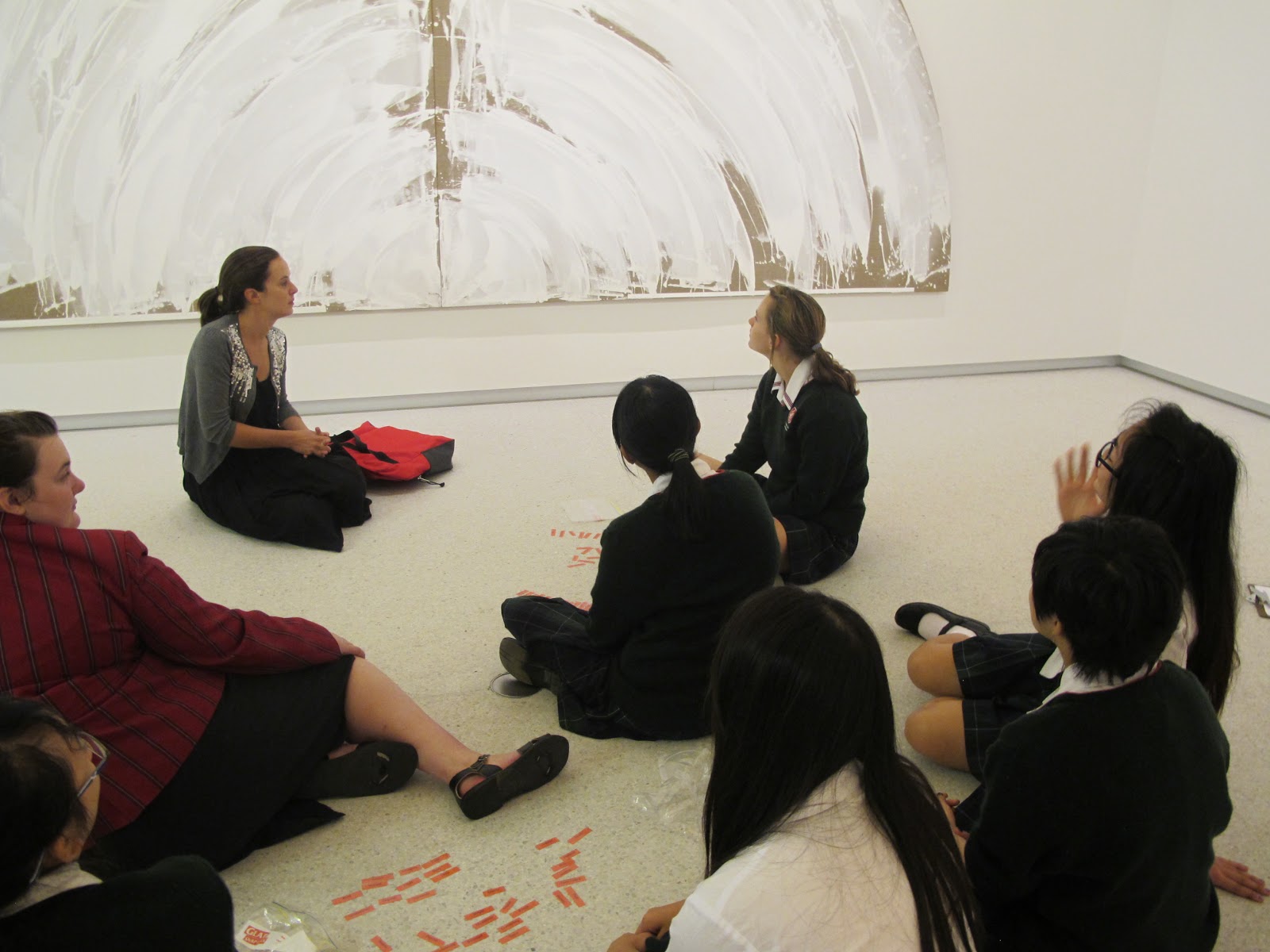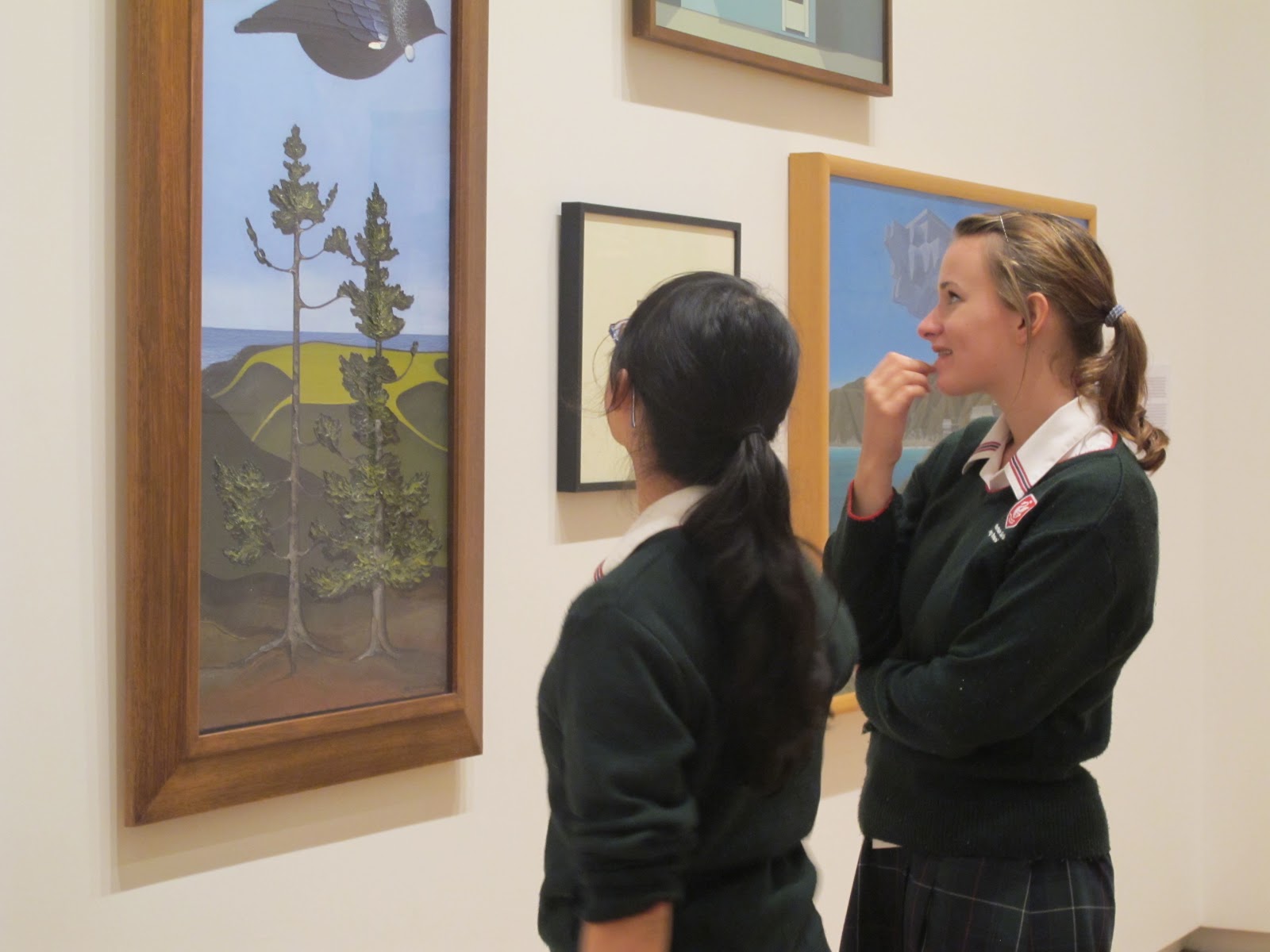Wednesday 10 April 2013
Selina Anderson
Below is a blog I wrote almost a year ago, when our secondary programme was in its infancy. It developed out of a realisation that it was not just a case of pitching our existing programmes at a higher level, but actually writing something that was meaningful for students and their needs at that age.
Making Sense of Art: What do you think? was born out of this inquiry, focus groups with secondary teachers, and a pilot version of the programme. It is a programme that consists of a debate (options are: 'This is relevant to today’s audience/this is not relevant to today’s audience' using historic works, 'This is art/this is not art' using contemporary NZ works, and 'This best represents NZ identity/this does not best show NZ identity') and a close analysis (which incorporates sketching, and descriptive language exercises.
Hopefully this blog gives you a bit of insight into what goes into writing these programmes, and how we develop our practice to engage with new audiences! We are constantly evolving and developing this programme as we learn about this audience, and it has inspired our new programme For or Against: Debating Ideas and Concepts around Art.
How do I get them to talk to me?
For every group of students whose conversation is impossible to stop because all cylinders are firing with ideas, questions, problem solving and discussion; there is a group that can elude me. Where the metaphorical clock is ticking incredibly loudly and you are staring at the students, pulling out every trick in the book and being met with silence. Experiences like this got me wondering, how can I get these groups to talk? The problem was not the students, it was that I was unprepared on how to engage them, because they were not my usual audience. They were teenagers. The same old tricks just didn’t work for them.
What we offered these year 9-10s was a one-off Tour programme where we explore ways to talk about artwork, focusing on object, subject and context. I was anticipating the level of discussion and engagement I had experienced with younger children. I was wrong.
Aspects of the tour definitely worked, like:
- Independent looking around spaces of their choosing
- Historic artworks that had recognizable symbols, themes and techniques.
- They felt comfortable with works that had a clear narrative.
What didn’t work was:
- Talking about artworks an an object (perhaps it was too obvious and felt like a trick question when I asked 'what do you notice?' or, 'what do you think the work is made of?')
- Sharing with the whole group, and me (too much pressure)
- There seemed to be an underlying look they all had, which was ‘what has this got to do with me?’
If I’m really honest, in hindsight… probably not much of it had anything to do with them. Who can blame them for not wanting to talk about something they found irrelevant and disconnected from their daily lives? No one does.
However, I firmly and stubbornly believed that this age group could engage meaningfully with artwork. So what was I doing wrong?
After researching some tips and teaching strategies for teenagers (see below for links), I realized I had broken some cardinal rules.
- This age group has very tight social spheres and is riddled with anxiety, and is therefore resistant to sharing with strangers (me).
- Nina Simon says in her blog Museum 2.0, that you will have more success by creating opportunities for teens to share with their friends than by forcing them into uncomfortable situations. (Again, me, and a new environment)
- It takes a lot of time to build a connection and rapport with this age group. They need to trust you. (They are only with me for an hour)
- Topics they might ‘geek out’ on at home, they will not share with friends because fear of judgement. So even if they were really interested, peer approval trumps 'geeking out' in public.
- Louanne Piccolo writes that they appreciate participating in decisions on what happens in a lesson, so they feel ownership of and commitment to the learning programme. Teenagers look for meaning and significance in their own lives in what they are taught, and teachers should capitalise on this and personalise their lesson with regards to what is happening in their lives.
So my entire lesson was a horribly awkward situation for them that was not personalised, current, quick paced or relevant. Based on my research, my new challenge was to create a fast-paced, fun, student-driven session that gave them independence to take control of what they were learning and why. And I had one hour to do it. And I was a complete stranger. Piece of cake!

Students taking part in our Secondary Pilot in 2013. We used what we learnt from our experiences with the students I talk about in this blog.
If they were anxious to voice their own opinions because of their growing fear of right and wrong, then I decided to give them opinions. If they didn’t want to talk to me, then I would get them to talk to each other and nominate a confident spokesperson. I would also flat out ask them what the gallery had to do with them, and try to personalise the gallery experience, bracing myself for whatever response.

When I finally got to put theory into practice, I was thrilled to see that I was on the right track. I incorporated half an hour of self-guided looking with their peers (no facilitation) to satisfy their growing desire for independence, and within the facilitated component the discussion and debates were student-driven. I took a back seat and talked much less.
The opinions I gave to them to debate in a contemporary space were 'this is art, this is not art'. Students had to pair up, choose an artwork, and argue both sides, coming up with three points as to why this was or was not a piece of art. In the Victorian art exhibition they argued, 'this is relevant, this is not relevant', where they argued the relevance of showing these artworks for today's visitors.
This approach gave them a safe space to voice opinions in a supportive environment where there was no right or wrong. It was informal, it was not a question-answer session. They got to take the reins on the direction of the lesson and the discussion. What I want to include next time is a close analysis to create a balance between broad looking across a range of works, and close looking at one artwork.

The revised programme felt like an opportunity for them to apply skills from their lives into a real world context. There was high level critical and creative thinking happening where they were making connections, synthesizing and evaluating their ideas and the ideas of their peers. They were justifying, debating, and seeing things from multiple perspectives. I can't wait to teach more with this age group. When you engage this age group meaningfully with art, it is a hugely satisfying and rewarding experience for everyone involved.
What is your experience teaching teenagers in a gallery or museum context?
Here are just a couple of useful sources I came across in my research:
Picolo, L. (2010). Teaching Teenagers: How to Motivate and Interest Them.
Simon, N ( July 2010). Teenagers and Social Participation.
Sale, J. (2011). Teenage Behaviour: Tips for Teachers.